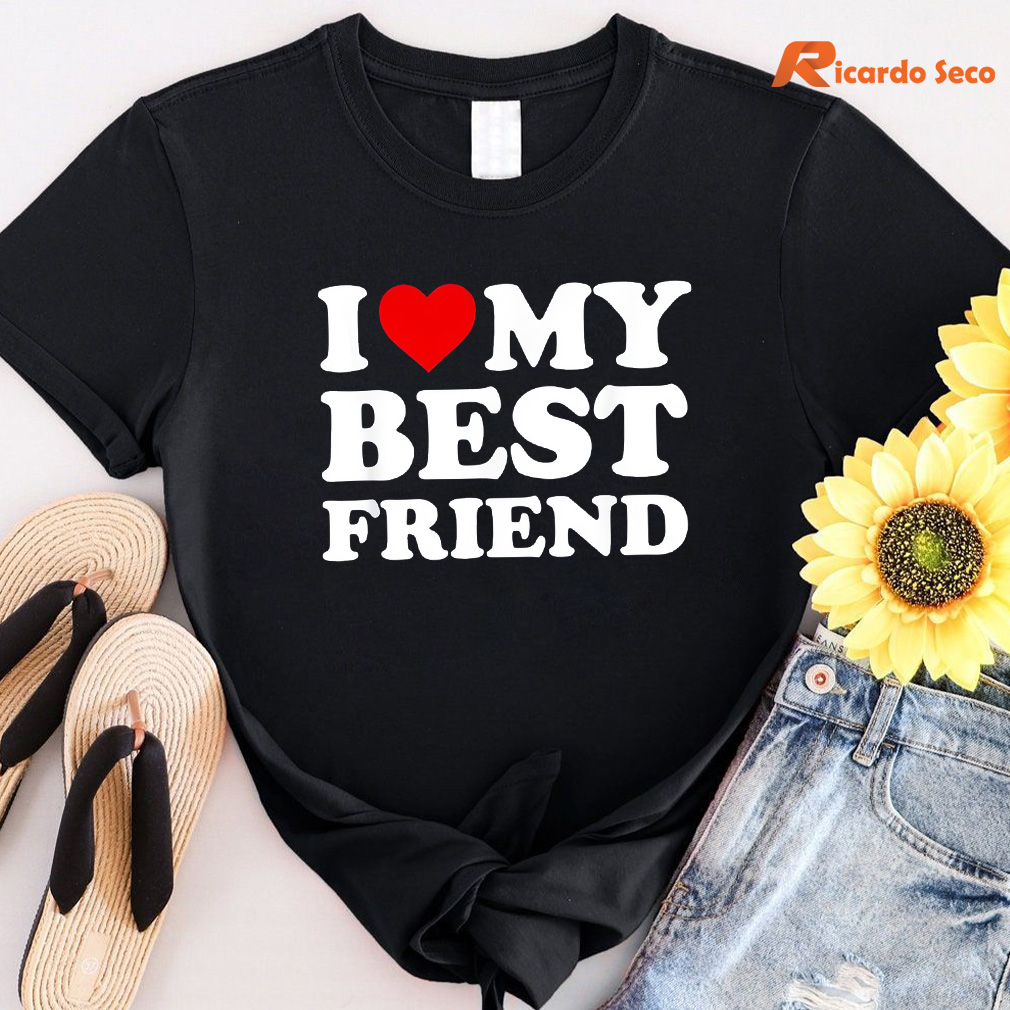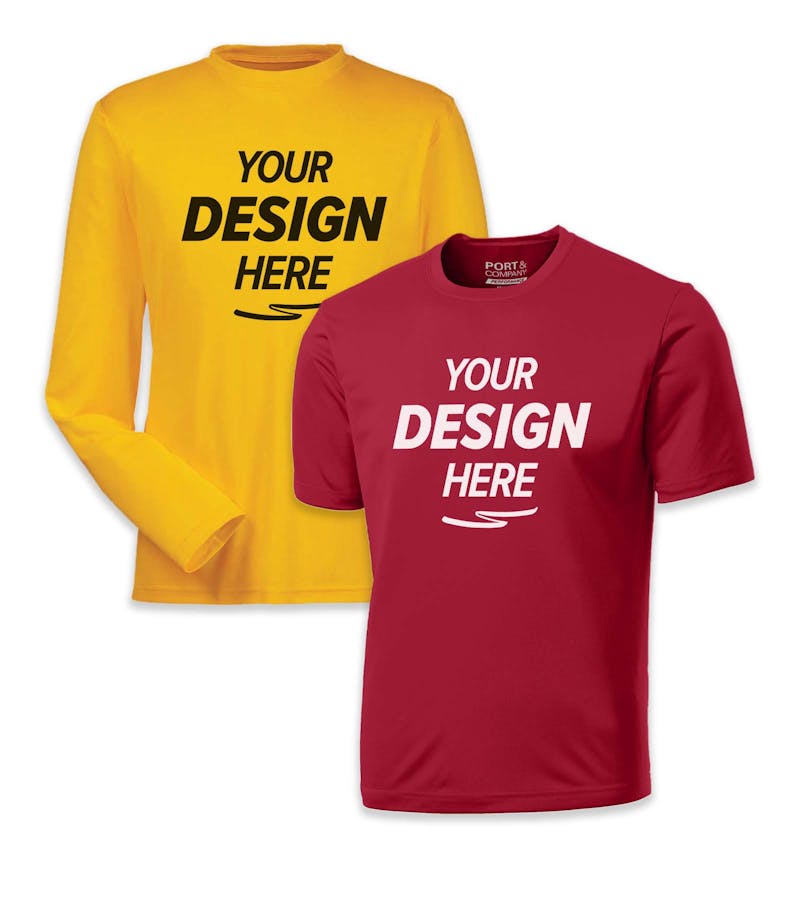Brand Visibility at Its Best: Logo on a Shirt
Enter Ricardo Seco Shop: Trending T-Shirts for the Whole Family. This is a place where logos meet textiles, and branding comes alive in the most vibrant way. When considering the cost of putting your logo on a shirt, Ricardo Seco Shop demonstrates the balance between quality and cost-efficiency. This shop has managed to make a name for itself by offering high-quality, customizable T-shirts that cater to a wide demographic, embodying the essence of a family brand.
But the question remains: How much does it cost to put a logo on a shirt? The answer is not as straightforward as one might hope. Several factors come into play, affecting the overall pricing, and here, we will explore those elements in detail.

The Nitty-Gritty of Logo Printing: Factors That Determine Cost
The journey of branding a shirt with a logo starts with understanding the various factors that influence the cost. From the printing method selected to the complexity of the design, each choice you make will have a direct impact on the price.
Printing Method: The most common methods include screen printing, direct-to-garment (DTG), heat transfer, and embroidery. Each has its own pricing structure, with screen printing often being the most cost-effective for larger batches.Design Complexity: The number of colors in your logo and the complexity of the design can significantly affect the cost. More colors generally mean more screens to be prepared in the case of screen printing, which increases the price.Quantity: Economies of scale can play a massive role in the cost per item. Ordering in bulk usually reduces the cost per shirt, making it an essential factor for businesses to consider.Shirt Quality: The base cost of the shirt itself will also affect the final price. Higher quality shirts will be more expensive, but they also serve as a better canvas for your logo and might reflect the brand’s image more effectively.Additional Customizations: Any extra customizations, like adding names or numbers, can add to the cost. It’s super important to consider whether these additions are necessary for your branding purposes.Location and Size of the Logo: Placement matters. A standard left-chest logo may cost less than a full-back design due to the amount of ink or materials used and the complexity of printing.Color Matching: If your brand colors are specific and need custom mixing or pantone matching, this can also add to the overall cost.Set-Up Fees: Some printing methods require initial setup fees for creating the screens or templates needed for your logo, which is a one-time cost that needs to be factored into the overall expense.Each of these factors must be carefully considered when determining the final cost of putting a logo on a shirt. By understanding and navigating these variables, businesses can make informed decisions that align with their marketing strategies and budget constraints.
Read more: Can I Sell Shirts with My Logo?
Selecting the Right Printing Method for Your Logo
To get more granular, let’s dive into the different printing methods available, which are central to understanding the financial outlay required for logo printing on shirts.
Screen Printing: This traditional method is cost-effective for larger orders but can become costly if you’re dealing with multiple colors. It’s ideal for bold designs and large prints.Direct-to-Garment (DTG): DTG is excellent for complex designs with multiple colors. It’s a go-to for small to medium orders but can be expensive for larger quantities.Heat Transfer: Heat transfer works well for both small and large orders and is particularly cost-effective for designs with many colors. However, the feel of the print is different and may not be to everyone’s liking.Embroidery: While not a printing method per se, embroidery offers a premium look and feel for your logo. It’s often used for corporate apparel and can be pricier than other methods due to the intricate work involved.In conclusion, the factors influencing the cost to put a logo on a shirt are multifaceted and interconnected. It’s a balance of quality, quantity, and the specific needs of your branding campaign. Whether you choose to go with a provider like Ricardo Seco Shop or another reputable printer, it’s super important to align your method and material choices with the image you want to project and the budget you have at your disposal. Stay tuned for the next part of this discussion, where we’ll break down these costs further, jump into into additional considerations, and offer tips on how to get the best value for your investment.
Read more: What is a tshirt niche? Crafting Identity in a Staple Wardrobe Item
Factors Influencing Logo Printing Costs
Delving Deeper into Printing Techniques and CostsTo make a wise decision for your business or personal brand, let’s scrutinize the different printing techniques in detail:
Screen Printing Economics
Screen printing involves creating stencils—screens—for each color used in the design. While it offers durability and a high-quality finish, the initial setup costs can be high. This is particularly true for logos with several colors, as each requires its own screen. However, the cost per shirt decreases significantly when ordering in bulk, which is why this method is favored for large orders. The initial cost might seem steep, but per-unit costs can be quite low, making this a great option for large-scale promotions or uniforms.
The Digital Detail of DTG
Direct-to-Garment printing is akin to printing on paper, but on fabric. It’s great for designs with many colors or detailed images. There’s minimal setup involved, meaning it can be a more cost-effective option for small batches compared to screen printing. The price per shirt generally remains constant, regardless of the order size, which makes DTG an excellent option for limited runs or one-offs. However, for large orders, DTG might not be as economical as screen printing.

Heat Transfer: A Flexible Option
Heat transfer allows for vibrant full-color images to be transferred onto shirts. The cost is mainly dependent on the size of the design rather than the number of colors. It can be a cost-effective solution for both small and large orders, and it’s particularly advantageous for last-minute orders due to the quick production time. Although, for larger orders, the per-unit price may not decrease as much as with screen printing.
The Premium Touch of Embroidery
Embroidery offers a raised, textured look that exudes professionalism. It’s often the most expensive option due to the time and resources needed to embroider each piece. However, the cost can be justified by the sophisticated look and long-lasting quality it provides. It’s an excellent choice for corporate apparel or high-end branding efforts.
Quantity and Quality: A Balancing Act
Ordering in bulk typically reduces the cost per item, as many of the setup fees and material costs are distributed across a larger number of shirts. High-quality shirts cost more, but they can elevate the perceived value of your logo and brand. Sometimes, opting for a mid-range quality can be a strategic choice to balance cost without compromising on the look and feel of the logoed shirt.
Customization and Complexity Costs
More intricate logos require more time and precision to produce, which can drive up the cost. If you’re working with a complex logo or require additional customization like names or numbers, expect the price to climb accordingly. Simplifying the design may lead to significant savings without a substantial impact on the branding effect.
Additional Considerations
Beyond the direct costs, consider the logistics of distribution, the potential for returns or errors, and the lead time required to fulfill your order. These factors can all influence the final cost and should be factored into your budget.
Read more: Can You Sell Print-on-Demand Shirts on Amazon?
Wrapping Up: Getting the Most Bang for Your Buck
To ensure you’re getting the best value for your investment:Compare Quotes: Get multiple quotes to ensure you’re getting good deals.Order in Bulk: If possible, order in bulk to drive down the cost per shirt.Simplify Your Design: A less complex logo can reduce costs without sacrificing impact.Choose the Right Method: Match the printing method to the order size, design complexity, and desired quality.By thoroughly understanding the variables at play when putting a logo on a shirt, you can make an informed decision that aligns with your branding strategy and budget. Whether you’re a small start-up or a seasoned corporation, every detail from the shirt quality to the printing technique matters.
At Ricardo Seco Shop, where trending T-shirts for the whole family are made with care, these considerations are the backbone of their service. They represent the intricate dance of quality, cost, and branding that goes into putting a logo on a shirt. With the right approach, your investment in logoed shirts can yield substantial branding benefits, making it a worthwhile endeavor for your marketing efforts.
In the grand scheme of things, the cost of putting a logo on a shirt is not just about the dollars and cents—it’s about making a shout-out, leaving an impression, and building a brand that resonates with your audience. Choose wisely, plan carefully, and your logoed shirts will be worth every penny.

